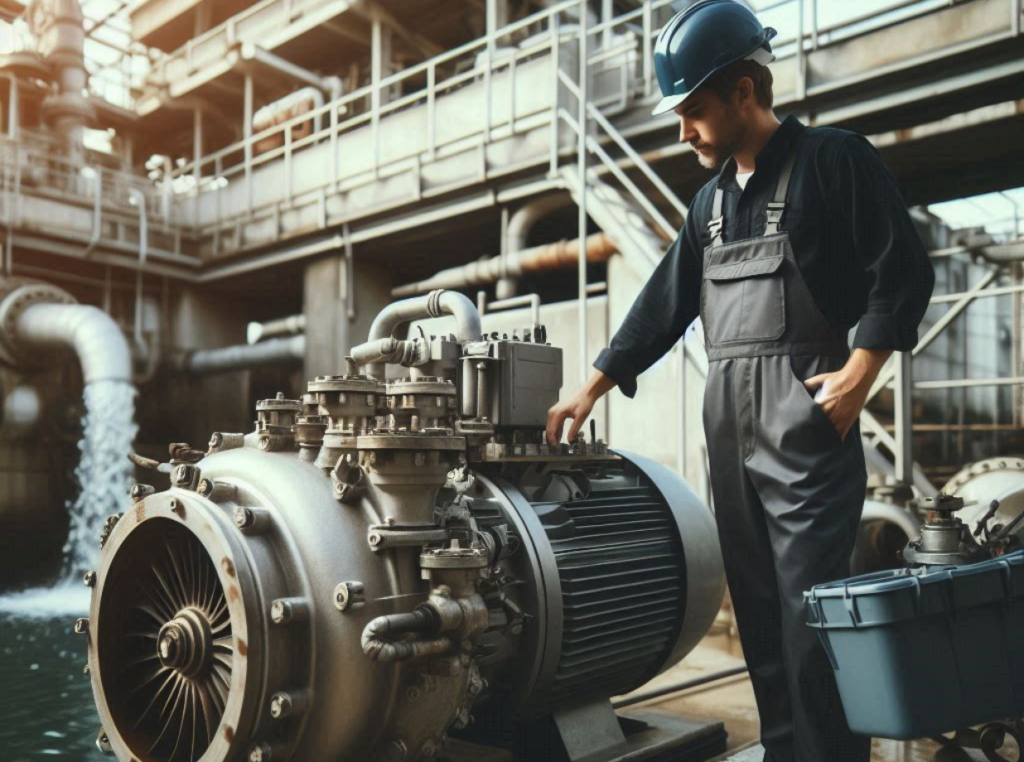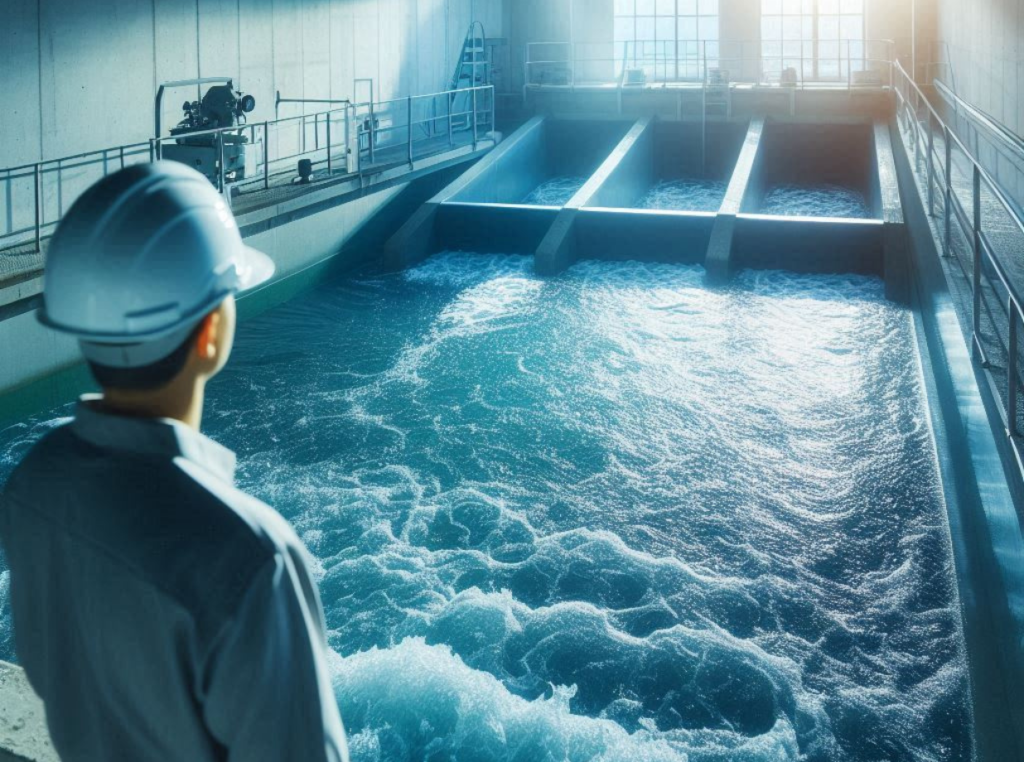Have you ever wondered how wastewater is effectively treated before it’s safely returned to the environment? In the vast and intricate world of wastewater treatment, the Sequence Batch Reactor (SBR) process stands out as an innovative and efficient method. This article aims to provide a detailed understanding of the SBR process, its components, phases, advantages, limitations, and its real-world applications. By the end, you’ll have a comprehensive grasp of why SBR is a critical technology in the field of wastewater treatment.

Introduction to Wastewater Treatment
Wastewater treatment is a crucial process that converts sewage and industrial discharge into an effluent that can be returned to the water cycle with minimal environmental impact. Given the growing global population and industrial activities, effective wastewater treatment systems are more important than ever to prevent pollution and protect water resources.
What is an SBR and its Role in Wastewater Treatment?
A Sequence Batch Reactor (SBR) is a type of activated sludge process designed for wastewater treatment, particularly effective at handling varying wastewater volumes and qualities. Unlike conventional continuous flow systems, SBR operates in batch mode, allowing for greater flexibility and control over the treatment process.
The Purpose of SBR in Wastewater Treatment
SBRs are used to treat municipal and industrial wastewater, leveraging biological processes to remove contaminants. Here, microorganisms play a key role in breaking down organic matter, nitrogenous compounds, and other pollutants, transforming them into safer by-products.
Breakdown of the SBR Process Phases
The SBR process is characterized by distinct phases: Fill, React, Settle, Decant, and Idle. Each phase is critical to the efficiency and effectiveness of the overall treatment.
1. Fill Phase
During the Fill phase, wastewater is introduced into the reactor. This phase can be subdivided further into static fill, aerated fill, or mixed fill, depending on the oxygenation and mixing strategies employed.
- Static Fill: No aeration or mixing occurs, allowing for initial settling.
- Aerated Fill: Aeration is provided to start biological processes.
- Mixed Fill: Mixing without aeration to ensure uniform distribution.
2. React Phase
In the React phase, the biological treatment takes place. Aeration is introduced to promote microbial activity, leading to the biodegradation of organic pollutants. This phase can last several hours and is crucial for achieving desired treatment levels.
3. Settle Phase
The reactor is allowed to remain still in the Settle phase, enabling the solid particles and biomass to settle at the bottom. This settling creates a clear supernatant, which is essential for the subsequent decanting.
4. Decant Phase
In the Decant phase, the clear supernatant water is carefully removed from the reactor without disturbing the settled solids. This decanting process ensures that the treated effluent is separated from the biomass.
5. Idle Phase
The Idle phase is a period of inactivity that provides flexibility for varying influent flows or maintenance activities. During this time, sludge can be removed, and the system can prepare for the next cycle.
Key System Components
Understanding the SBR process also involves familiarizing yourself with its core components. These components work together to ensure effective and efficient treatment.
Main Components
- Aeration System: Provides oxygen to support the aerobic digestion process.
- Decanter: Removes the treated effluent from the reactor.
- Sensors and Controls: Monitor parameters like oxygen levels, pH, and nutrient concentrations.
- Mixers: Ensure uniform distribution of wastewater and biomass.
Importance of Monitoring and Process Control
Continuous monitoring and control are vital to the efficiency of an SBR system. Automated sensors and control systems help maintain optimal conditions for microbial activity and ensure that each phase of the treatment cycle performs as expected.
Monitoring Parameters
Key parameters to monitor include:
- Dissolved Oxygen (DO): Essential for aerobic microbial processes.
- pH Levels: Maintain the optimal range for microbial activity.
- Temperature: Affects the rate of biological reactions.
- Sludge Volume Index (SVI): Indicator of sludge settling characteristics.
Process Control Strategies
Implementing advanced control strategies can optimize the treatment process, enhance system performance, and reduce operational costs. These strategies include:
- Real-Time Monitoring: Use sensors to provide continuous data on critical parameters.
- Automated Adjustments: Enable automatic adjustments to aeration and mixing based on real-time data.
- Predictive Maintenance: Utilize data analytics to anticipate and prevent potential issues.

Advantages of Using SBR Technology
The SBR process brings numerous benefits, making it a popular choice for various wastewater treatment applications.
Flexibility and Adaptability
SBR systems’ batch mode operation allows them to handle varying influent volumes and qualities efficiently. This adaptability makes SBRs suitable for diverse applications.
Efficient Treatment
The controlled environment within SBRs promotes efficient biological treatment, resulting in high-quality effluent. Sequential phases allow for optimized conditions for each treatment process.
Space Efficiency
Since SBRs combine multiple treatment processes in a single reactor, they often require less space compared to traditional continuous flow systems. This compact design is beneficial for installations with limited space.
Reduced Sludge Production
SBRs often produce less excess sludge compared to other treatment methods, reducing the need for sludge handling and disposal.
Limitations and Challenges of SBR Technology
Despite the numerous advantages, the SBR process also has certain limitations and challenges.
Complexity of Operation
Effective SBR operation requires precise control and monitoring, making it complex compared to some other treatment methods. Skilled personnel are essential for maintaining optimal performance.
Startup Time
The initial startup period for SBR systems can be lengthy, as it takes time to establish the necessary microbial populations for effective treatment.
Maintenance Requirements
Regular maintenance is crucial to ensure the proper functioning of SBR components. This includes checking and calibrating sensors, cleaning decanters, and monitoring aeration systems.
Real-World Applications of SBR Systems
SBR technology finds application in both municipal and industrial wastewater treatment, catering to a wide range of treatment needs.
Municipal Wastewater Treatment
SBR systems are widely used in small to medium-sized municipalities where fluctuating wastewater volumes are common. The flexibility and efficiency of SBR systems make them ideal for community wastewater treatment.
Industrial Wastewater Treatment
Industries generate various types of wastewater with different contaminants. SBRs can be tailored to address specific industrial wastewater challenges, making them valuable in sectors such as food processing, pharmaceuticals, and textiles.
Maintenance and Troubleshooting Common Issues
To ensure long-term efficiency, regular maintenance and prompt troubleshooting of SBR systems are vital.
Routine Maintenance Tasks
- Inspect Aeration Equipment: Regularly check and clean aerators to ensure proper oxygen transfer.
- Clean Decanters: Avoid clogging and ensure effective decanting by routinely cleaning the decanters.
- Calibrate Sensors: Periodically calibrate sensors to maintain accurate monitoring of key parameters.
- Check Sludge Levels: Monitor sludge levels to prevent excessive sludge buildup and maintain optimal performance.
Common Issues and Solutions
| Issue | Cause | Solution |
|---|---|---|
| Poor Settling | High Sludge Volume Index (SVI) | Adjust aeration, reduce sludge load |
| Odor Problems | Anaerobic conditions in the reactor | Increase aeration, improve mixing |
| Foaming | Excessive biomass or nutrient imbalance | Control biomass growth, adjust nutrients |
| Decanter Clogging | Solids carryover during decanting | Improve settling phase control |
Future Trends in SBR Technology
As technology advances, several trends are poised to shape the future of SBR systems, enhancing their efficiency and applicability.
Automation and Control
The integration of advanced automation and control systems is a key trend in SBR technology. Automated systems can optimize the entire treatment process, reduce human intervention, and improve overall system efficiency.
Energy Efficiency Improvements
Reducing the energy consumption of SBR systems remains a priority. Innovations in aeration technology, such as fine-bubble diffusers and energy-efficient blowers, can significantly lower operational costs.
Enhanced Process Monitoring
The development of sophisticated sensors and data analytics tools enables real-time monitoring of more parameters, providing deeper insights into system performance and facilitating proactive adjustments.
Resource Recovery
Future SBR systems may incorporate technologies for resource recovery, such as nutrient harvesting (phosphorus and nitrogen) and biogas production, turning wastewater treatment into a more sustainable process.

Conclusion
The Sequence Batch Reactor process is a hallmark of modern wastewater treatment, offering flexibility, efficiency, and adaptability. Understanding its phases, components, advantages, and challenges helps in appreciating its significant role in both municipal and industrial applications. With ongoing innovations and future trends focusing on automation and energy efficiency, SBR technology is set to become even more pivotal in addressing global wastewater treatment needs.
Resource List for Sequence Batch Reactor (SBR) Process
1. Books & Textbooks
- Wastewater Engineering: Treatment and Resource Recovery by Metcalf & Eddy
Link to Amazon - Biological Wastewater Treatment by Grady Jr., Daigger, Love, and Filipe
Link to Amazon
2. Technical Reports & Manuals
- EPA Design Manual: Sequencing Batch Reactors
EPA SBR Design Manual - Water Environment Federation (WEF) – Manual of Practice No. 8: Biological Nutrient Removal (BNR)
Link to WEF Manual
3. Academic Journals & Articles
- Water Research Journal
Link to Water Research Journal - Journal of Environmental Management
Link to Journal of Environmental Management
4. Online Resources & Databases
- EPA National Service Center for Environmental Publications (NSCEP)
EPA NSCEP Website - ScienceDirect
Link to ScienceDirect
5. Professional Organizations & Networks
- Water Environment Federation (WEF)
WEF Website - International Water Association (IWA)
IWA Website
6. Courses & Training Programs
- EPA Water Operator Certification Program
EPA Water Operator Certification Program - American Water Works Association (AWWA) Online Courses
AWWA Online Training
7. Software Tools & Models
- BioWin (Wastewater Process Simulation Software)
BioWin Website - SIMBA# (Wastewater Simulation Software)
SIMBA# Website
8. Case Studies & White Papers
- “Optimizing Sequencing Batch Reactor Performance in Municipal Wastewater Treatment” by Siemens Water Technologies
Siemens White Paper - EPA Office of Water – Case Studies
EPA Office of Water Case Studies
These resources should help you dive deeper into the SBR process and its practical applications!
